When it comes to selling soft drinks, forecourt retailers are doing a pretty good job. So says Kate Fletcher, business unit director for the convenience and impulse channel at Britvic. She points to Nielsen data that reveals the forecourt sector’s sales of soft drinks have risen by nearly 11% in the past three years. For those interested in how these statistics are measured, the Nielsen data covers major oil company-owned forecourts but also takes an average read across a number of independents to estimate the overall figure.
"The figures are really positive," says Fletcher, who puts the growth down to improvements in store formats and better standards of retail execution.
"However, in 2011 things have slowed down. First quarter growth has slowed to 0.5% versus MAT growth of 5.3%. When we talk to key customers we hear about footfall being down because of the weather at the beginning of the year and the high fuel prices and obviously that’s had an effect on sales."
But Fletcher believes there is still a real growth opportunity for soft drinks sales in forecourts because of the trend towards convenience and top-up shopping. Indeed, speaking at the launch of the Britvic Soft Drinks Report 2011, Murray Harris, customer management director at the company, said: "The increase in ’top-up’ shopping and single-serve soft drinks sales has been great news for convenience retailers after they endured a difficult 2009.
"Soft drinks continue to go from strength to strength in the take-home channel, in spite of economic uncertainty. Although people continue to be extremely careful about where and how they spend their money, they clearly see soft drinks as an affordable treat, especially for those big nights in."
Embracing NPD
"Generally forecourts manage the category well," says Fletcher, "And they have good ranges, plus they are really good adopters of NPD (new product development). For example, they’ve really got behind the launches of SoBe Pure Rush and Mountain Dew Energy. There was great in-store visibility for the launches of these products."
But she says still too many people go straight to the till to pay for their fuel in forecourts rather than picking up a soft drink on the way. "And, according to Him’s Convenience Tracking Programme, 64% of people who buy food in a forecourt still don’t buy a soft drink."
She advises forecourt retailers to go for more impulse solutions such as fast-lane chillers and more off-fixture promotions near the checkout.
"I think they need to encourage up-selling too. If a customer is buying a snack, staff could ask whether they’d like to buy a drink as well it’s a big opportunity and it’s been a big success in BP outlets. Promotions are also important to help catch petrol buyers’ attention as they go in the store."
Fletcher thinks that sometimes retailers forget that 40% of forecourt shoppers are women.
"Forecourts offer big chocolate bars and big bags of crisps but they need to offer things for women too.
"Many of the energy drinks are male-oriented but So Be Pure Rush is targeted at women. Launched initially in BP outlets and WH Smith travel outlets at airports and railway stations, it’s now being rolled out to independents. It’s going phenomenally well but it’s still early days."
SoBe Pure Rush is available in two flavours: apple berry burst and tropical twist. It contains caffeine, guarana and ginseng but has no artificial colours or flavours. It comes in a 250ml can with a recommended retail price of £1.39.
Globally, the brand is worth £570m.
When most people think about soft drinks they probably think about cola after all it is the biggest-selling sub-category in take-home soft drinks. However in forecourts, energy drinks outsell cola. Fletcher says they account for one-third of all soft drinks sold in forecourts and the category is in double-digit growth. She points to the launch of Mountain Dew Energy, which she says has been a huge success.
"But Pepsi is doing incredibly well too up 9% in forecourts against cola sub-category growth of just 4%.
"The 600ml pack of Pepsi offering consumers bigger bottle, better value is selling well."
Bottles versus cans
Bottles are obviously big business but Fletcher says some forecourts should still stock cans too. "It really depends on your type of outlet whether yours is a motorway store or a local store. But it’s probably best to stick to a mix of formats."
To sum up, Fletcher’s tips for forecourt sales success are clear signage, making sure the soft drinks chiller is clearly visible and making the most of cross-category links.
Britvic has worked hard with the big oil company-owned stores to push soft drinks through in-store promotions, pump advertising and advertising on external news boards.
"It’s been pretty effective and we’re trying to do similar things with independents too," says Fletcher.
But it’s not just Britvic which is working hard to boost soft drinks sales. Coca-Cola Enterprises’ (CCE’s) Open More Business initiative aims to target new growth opportunities in soft drinks. The company’s trade communications manager, Selena Taylor, explains: "Our teams have been using the findings published last year to work with retailers to unlock their share of a £1.4bn incremental opportunity across the category. Key findings for forecourts include that 43% of shoppers just buy fuel and 27% just buy from the shop, while 30% buy both (Him, Convenience Tracking Programme).
"The key figure here is the opportunity that those 43% of ’fuel-only’ shoppers represent. Nearly all of these shoppers will have to enter the forecourt store to pay for their fuel. So our objective is to try and influence that shopper at key points of interruption all the way along the path to purchase from when they first drive onto the forecourt to when they go to pay at the till."
It is also estimated that £26.8m is lost each year in forecourts by them simply not having the right stock on shelf.
The busiest periods for soft drinks sales are during lunch (12pm-2pm) and after work (5pm-7pm) so Taylor says this is when shelves should be re-stocked in preparation for peak selling periods. And sub categories like energy, sport and water perform above average in forecourts compared with other convenience channels so these are the ones that will perform best when allowed the most space on the shelf.
Taylor says retailers should look out for CCE’s Open More Business booths at their local cash and carries. "We will be reaching over 30,000 retailers and visiting cash and carry depots across the country to talk to even more customers and offer them the Soft Drinks MOT to see if there are any immediate improvements they can make. "
Customers are asked to complete the five-minute self-assessment Soft Drinks MOT to measure current range performance, and will be offered tips on how they can improve it. Every participating customer will be given a £2 voucher off a single case of CCE product to spend in the depot on that day.
CCE makes over 600,000 sales calls to independents every year. "It’s a big commitment," says Taylor. "In further support to the independent sector, we have now categorised stores into gold, silver and bronze. This has been based on extensive surveys with retailers. Retailers who are looking for in-depth soft drinks consultancy are categorised ’gold’ so we can dedicate more store time to them. As a result of this work, we are now working with over 10,000 additional outlets, so it is a great success so far."
Price-marked packs
Value-conscious shoppers seem to love price-marked packs. CCE has extended its price-marked range to include all 500ml Relentless, Oasis summer fruits (500ml), Ocean Spray (1ltr), 5 Alive (1ltr) Schweppes Lemonade (2ltr), My Coke (Coca-Cola, Diet Coke and Coke Zero) four-can packs and 330ml cans of Fanta, Dr Pepper, Lilt and Sprite.
Selena Taylor says: "Price-marked packs on quality brands are a key opportunity for independents and we expect this to be a growing trend as shoppers look for the best value in all product areas. According to Him data, 71% of shoppers are more likely to buy a product with a price mark and they offer great profit on return for retailers.
"We’re confident our new range of permanent price-marked packs will increase sales for independents and will help drive category growth."
Meal Deals
Taylor adds that CCE has worked with retailers to encourage meal and link deal trials across sandwiches, crisps and bake-off goods with some encouraging results.
Kantar research shows that nearly half of the population buy lunch ’on the go’ at least once a week so there is clearly an opportunity here.
And TNS Magasin research reveals that 75% of shoppers would buy into a full meal deal, but currently 70% only buy into one lunch category, such as sandwiches. The key reason for shoppers not buying into meal deals is that they don’t notice them in store so they must be clearly communicated to be effective. Additionally, almost 90% of shoppers say meal deal items must be positioned together to further encourage purchase ideally in a dedicated meal deal bay.
PepsiCo’s forecourt and travel controller, Richard Brown, is a fan of the meal deal. He recommends trialling Tropicana orange juice and the new still lemonade single-serve juices alongside sandwiches and breakfast items to encourage linked purchases.
"Meal deals are a great way to increase shopper spend on site while offering added value. This is in addition to ensuring Tropicana orange juice, Tropicana lemonade and Copella apple juice are available in the chiller."
Brown says fruit juice should form an essential component of every forecourt’s soft drink offering as it provides consumers with convenient, healthier refreshment on-the-go. "The key to squeezing strong juice sales is stocking the right range of market-leading brands. Tropicana is the UK’s number one juice brand (Nielsen data), worth £29.6m in impulse alone and represents 65% of the total juice market. It is currently out-performing the category, contributing £1.5m (+2%) as the fastest-growing juice brand despite an overall category decline of 2%.
The aforementioned Tropicana still lemonade is made from 100% natural fruit juice with no added sugar or water. It come in two flavours a traditional lemonade and a pink lemonade both available in 300ml bottles.
Juicy opportunity
According to Kevin Jones, out of home director at Innocent, there is a huge opportunity for juice and smoothies to play a bigger part in soft drinks chillers in forecourts. "If trade in forecourts of juice and smoothies matched that of the trade in the high street, the revenue opportunity for the forecourt sector could be worth over £23m."
Jones believes Innocent smoothies work so well in forecourts because they are "unique in their need state".
"They are a healthy snack and a tasty way to fill a gap when you’re peckish, which means they appeal to a different set of consumer need states. In fact comparing the smoothie need states (healthy snack) to those of juice (thirst-quenching and refreshment), it’s clear that both smoothies and juice can (and should) co-exist in a retailer’s chilled juice range."
But he says even more pertinent to forecourts is the fact that Innocent smoothies are closely associated with lunchtime purchases.
"Sixty five per cent of shoppers buy a smoothie at lunch, highlighting the importance of good store availability throughout the day (Tangible Shopper Research). Of total juice and smoothie sales, 71% are purchased with a sandwich, giving forecourt retailers an opportunity to capitalise on these trends by introducing smoothie-based meal deals. Health, quality and variety are key drivers behind forecourt purchase missions, and Innocent smoothies tick the box against all three of these drivers, which is why they have such a strong presence in UK forecourts."
The latest line from Innocent is a not-from-concentrate orange juice, which is launching in 330ml ’carafettes’. Jones says: "This breakthrough new pack design will really stand out on shelf and re-invigorate the chilled juice category. We hand-pick the juiciest fruit, squeeze and press them to make the perfect juice.
We manage to fit four juicy oranges into every 330ml ’carafette’. And as with everything we make, our juice is never concentrated and never sweetened. Just squeezed by us and enjoyed by our drinkers."
Red Bull in a bottle
The big news from Red Bull is its launch in a new 330ml PET bottle, which the company says will help grow the sports and energy category by being relevant to more consumers through more usage occasions.
Nielsen data shows that the bottle format in soft drinks is already popular with consumers, with 17 of the top 25 best-selling soft drinks in this format. Also, in the current make up of the sports and energy category, bottles contribute 57% of the value and cans 43%. However, when you look specifically into functional energy, bottles only make up 9%, which provides a massive opportunity to build category growth through this segment the fastest-growing of any within sports and energy.
Red Bull head of category marketing, Doug Bairner, comments: "We’re committed to delivering growth for the category and feel that the introduction of the PET bottle gives consumers a different offering while giving retailers a profit-driving SKU. The resealable format allows consumers to decide how and in what quantity they consume their energy, which is particularly useful for driving and in the workplace."
There’s big news from CCE as well with the launch of Powerade into the energy sector. The company says new Powerade Energy is the first soft drinks product that is positioned to provide ’dual energy’.
Apparently the current energy offering in the UK comprises two main types of products stimulate energy drinks and revive energy drinks. But Powerade’s new ’dual energy’ proposition has been designed to meet the consumer need for a third type of energy sustained performance energy.
The drink combines the latest nutrition technology to create ’dual energy’ that helps to energise fast, and sustain performance: fast-absorbing glucose plus caffeine and added B vitamins help deliver energy and focus, while a balanced blend of carbohydrates plus caffeine help to sustain performance.
Powerade Energy is designed to help provide additional energy to people undertaking intense physical activity as part of their lifestyle.
The lightly sparkling drink comes in two pack sizes: 500ml and 375ml PET bottles; and in two flavours sparkling berry and sparkling orange.
Both contain 5% real fruit juice, as well as natural flavours and no artificial colours.
Stuart Agates, head of energy at CCE, comments: "Powerade Energy is the culmination of over two year’s product research. We are really excited to introduce this innovative new product to our energy portfolio. It offers a fantastic new sales opportunity for retailers."
The launch of Powerade Energy will be supported by a multi-million pound marketing campaign, including TV, outdoor and digital advertising as well as targeted sampling activity.
Also available is channel-specific pos material including chiller stickers.
Getting it right
Meanwhile, Colin Seymour, sales strategy and category marketing director at GSK, is keen to ensure that forecourts are stocking the right brands and maximising their sports and energy drinks sales.
"The sports and energy drinks category has had a phenomenally successful year," he says. "In fact it’s the fastest-growing category within total FMCG and Lucozade has delivered more growth than any other brand within the category. Lucozade sales are up 9.4% to £370m that’s an additional £32m in incremental sales (Nielsen data).
"This is huge compared to Monster which, although growing fast at 239%, only achieved sales of £34m, so the growth of Lucozade is almost bigger than the total size of the Monster brand."
Water works
Paul Condron, head of brand marketing at Highland Spring, describes bottled water as the ’ice cream’ of the soft drinks category as sales can easily double with sustained hot weather.
"Maintaining availability is essential to tap into this profitable opportunity. It accounts for approximately 15% of the soft drinks category in winter months, with volume share increasing substantially in summer to 17% winning share from other soft drinks as shoppers opt for healthy hydration on the go, he says. "Increase space for bottled water lines during key summer months to maximise incremental soft drinks sales a 1°C increase in temperature increases sales of bottled water by 2% in Scotland and 1% in London (Mediacom, 2010).
"Dual-site bottled water during the summer period and, if possible, offer larger take-home packs to satisfy increased consumer demand.
"Space is obviously a premium in smaller stores but these outlets can still be proactive in driving sales by really making the most of the impulse market. Customers on the go prefer their water to be chilled for immediate consumption so ensure the fridge is well-stocked and in a high footfall position in the store."
Highland Spring has seen strong brand performance over the past year.
The 500ml screw cap formats in both still and sparkling variants increased sales by 29% year-on-year (Nielsen) while the 500ml and 750ml sports cap SKUs have also performed particularly well with the latter adding an extra 10% value sales within smaller retailer outlets.
"Single-serve bottles sell particularly well as part of meal deals so clever merchandising can be used to encourage complementary purchase opportunities," says Condron.
Fruity flavours
"For the forecourt sector, we’ve found that our best sellers are Vimto original fizzy 500ml, the new Vimto still 500ml sports cap and cherry Vimto 500ml," says national account manager, Dave Newton. The new-look 500ml still Vimto bottle was launched earlier this year to attract teens ’on the go’.
It has curved contours for easy grip, ridges at the neck and a sports cap to make ’on the go’ drinking easier. Research suggests that teens would be 65% more likely to purchase Vimto in the new sports cap bottle versus the previous design featuring a wide mouth and screw top.
The new 500ml bottle is available in standard and 95p price-marked packs.
Newton says the Vimto brand doubled its sales in forecourts last year thanks to extended distribution, new consumers and the brand’s organic growth.
"Over the past year we’ve heavily invested in Vimto, resulting in a brand value of £55.1m, growing at a rate of 19% year-on-year (Nielsen).
The cherry Vimto brand is now worth £3.6m, and Newton says 53% of its sales are incremental. "It has also introduced completely new buyers to the Vimto brand, with a third of those who buy it for the first time buying it again."
The cherry flavour will be included in Vimto’s TV advertising for the first time this year plus there will be targeted sampling activity to drive more trial.
In March, Vimto Soft Drinks launched the Levi Roots soft drinks range, which was developed by the entrepreneur in response to the growing demand for Caribbean flavours in the UK.
The range of fizzy drinks and fruit juices features a combination of authentic Caribbean fruits and flavours that have been given that extra ’twist’ by Roots to create products that set it apart from the rest of the market.
The fizzy range includes fiery root ginger beer with lime ’n’ honey, which is made with Jamaican ginger extract, and Caribbean crush, which is a tropical blend of mango, grapefruit and pineapple. Both flavours come in 2ltr and 500ml PET bottles as well as 330ml cans.
Meanwhile, Newton describes 2010 as "an amazing year for Sunkist".
"Its eye-catching and colourful new look and delicious new flavours, coupled with a competitive wholesale price, resulted in huge distribution gains with over 400 new trade listings and massive triple digit growth in the impulse channel."
Sunkist is available in 330ml cans in outers of 24 and in 2ltr bottles in outers of six. The 2ltr bottle is price-marked at £1 all year round.
Forecourts shouldn’t forget squashes and cordials because, according to Britvic’s 2011 Soft Drinks Report, sales grew by 5% last year to reach £501m.
"The steady growth of the cordials market and success of our brand indicates that people are continuing to choose dilutes to make their money go further in times of austerity," says Newton. "It’s a good solution for shoppers who are keeping a family fed and watered on a tight budget."
Vimto cordial is enjoying a total MAT value growth of 23%, growing nearly five times faster than the market. And Newton says Vimto’s ’Seriously Mixed Up Fruit’ marketing campaign has resulted in a better awareness of Vimto’s entire range. "People are now seeing the brand as more than just fizzy Vimto and are exploring all the variants including our original and no added sugar cordials."
Newton adds that sales of Vimto cordial grew by 19% last winter (Nielsen). "It’s fruity, caffeine-free credentials make Vimto a good option for young people who find teas and coffees boring, or for those who don’t like tea or coffee. We know many already consume Vimto cordial cold and have now adopted it as their hot drink of choice.
"We launched a consumer campaign ’It’s hot up north’ with northern celebrities including Steve Coogan, Peter Kay and Agyness Dean pledging their allegiance to Vimto and spreading the word by sporting their limited-edition campaign t-shirts. This struck a chord with our target audience and will help to build on cordial sales."
Travel Trends
Energy and sports drinks account for 44% of sales in travel outlets and are enjoying 6.5% growth. The data comes from Synovate Accumulated Travel and includes forecourts and transient outlets such as WH Smith, Moto and Welcome Break.
After energy and sports drinks, comes cola with a 21% market share and growth of 1.9%. Next comes water with 15% (down 0.1%); juice drinks with 11% (up 1.4%); fruit carbs with 7% (up 3.3%); and ’good for me’ at 3% (up 3.8%).
The top 10 brands in travel outlets in the 12 weeks to December 26, 2010 were: Red Bull; Lucozade; Coca-Cola; Diet Coke; Lucozade Sport; Ribena; Volvic; Evian; Relentless; and Oasis.
Watch out for...
l Boost (pictured left) is celebrating its 10th anniversary this year with new packaging across its range in both plain and price-marked packs.
l Coca-Cola celebrates its 125th anniversary on May 8 this landmark will be communicated on-pack and in-store over the coming months
l Diet Coke has a new TV campaign featuring its ’puppets’, which is running alongside outdoor and digital campaigns.
l New advertising for Lucozade Sport stars Brit rapper Tinie Tempah, world renowned drummer Travis Barker and Irish World Champion boxer Katie Taylor. The new campaign is described as "a celebration of energy in inspirational and infectious forms". It is appearing on TV, cinema and digital channels.
l To celebrate its new partnership with Paralympics GB athlete Richard Whitehead, and highlight its support for the London 2012 Olympic and Paralympic Games, Powerade has launched a new marketing campaign featuring Team GB and Paralympics GB athletes taking on the ultimate sweat test challenge.
l Sunkist orange and summer fruits flavours are now available in 500ml bottles exclusively for the impulse market. Rrp is 79p.
l New Balls for Britain is being described as Highland Spring’s biggest-ever promotion. Running over the summer months, it will allow consumers to collect promotional codes on special packs to redeem against a selection of high-quality branded sports balls. The promotion will be supported by advertising.
l Oasis has new packaging plus its popular blackcurrant apple variant has returned (pictured left). The brand will be supported by a multi-million pound marketing campaign.
l Ribena is now available in sparkling form. Ribena Sparkling comes in a 500ml bottle in two flavours: blackcurrant and raspberry. It is expected to appeal to new consumers as well as current Ribena buyers.
l The Ribena Berries are back on TV as part of a £2.3m campaign to help drive sales this summer. The latest instalment highlights the nutritional value of blackcurrants and emphasises the importance of domestically-sourced food and drink.
Milk it
If you’re looking for something a little different to stand out in your soft drinks range how about an organic flavoured milk?
Organic farmer Laurence Harris launched Daioni flavoured milk in 2004. He’d identified a gap in the market for a light and refreshing milk drink that, as well as being organic, was free from any artificial flavours and colours. Using milk from his dairy herd in Pembrokeshire, West Wales, Harris’ family-run company, Trioni, launched Daioni in three flavours chocolate, strawberry and banana.
Daioni (pronounced dye-on-knee) means ’goodness’ in Welsh and is produced from semi-skimmed milk. It is low in sugar and fat, and free from artificial additives. Packaged in a 250ml carton with an extendable straw, Daioni tastes great straight from the fridge, but doesn’t have to be chilled and has a long shelf life.
Laurence Harris, managing director of Trioni, explains: "Our aim with Daioni is to re-invent milk as a soft drink in a way that keeps all the nutritional benefits of organic milk, and is fun, tasty and handy too. The fact that Daioni is an ambient product makes it convenient for retailers to store and consumers to keep with them when they’re on the move. It’s ideal for car journeys and lunchboxes.
"We’re keen to support our stockists as much as possible and are developing a new range of point-of-sale material. This will be made available through our website (www.trioni.com) and through a number of wholesalers."
Get into the zone
Coca-Cola Enterprises’ Soft Drinks MOT highlights four key areas for independent retailers to consider:
l Approach zone do you have signage/promotions outside the store to entice shoppers inside?
l Impulse zone can shoppers easily buy products at the till point?
l Chiller zone is the product availability there for those making destination trips?
l Ambient or promotional zone do you have an area in store that will attract people to up-weight basket spend with products and promotions they could otherwise buy elsewhere?
rockstar makes waves
AG Barr achieved excellent results in 2010, growing at a rate of 21% which is significantly ahead of the soft drinks market (Nielsen data).
According to AC Nielsen, AG Barr’s Irn-Bru is the UK’s number one ’other flavoured carbonate’. This year the brand will be supported by a £15m marketing campaign.
Another big success is the Rockstar energy range, including Rockstar Recovery. AG Barr’s head of marketing, Adrian Troy, says: "Rockstar Recovery is the UK’s first non-carbonated energy drink, formulated with electrolytes as well as Rockstar’s usual energy-giving ingredients, making it ideal for re-hydration and thirst replenishment."
The brand is backed by a multi-year sponsorship agreement with reigning MotoGP world champion, Jorge Lorenzo.
HYPERLINK "http://www.agbarr.co.uk" www.agbarr.co.uk
Ends
.
Contacts
AG Barr 01236 852400 www.agbarr.co.uk
Boost 0113 2403666 www.boostdrinks.com
Britvic 0845 758 1781 www.britvic.com
Coca-Cola Enterprises 08457 227222 www.cokecce.co.uk
GSK 08702 415132 www.gsk.co.uk
Highland Spring 01764 660500 www.highland-spring.com
Innocent 020 8600 3940 www.innocentdrinks.co.uk
Pepsico 0118 930 6666 www.pepsico.co.uk
Red Bull 01344 418396 www.redbull.co.uk
Trioni 01239 682572 www.trioni.com
Vimto 01925 220122 www.vimtotrade.co.uk
market facts
l According to Britvic’s 2011 Soft Drinks Report, sales of take-home soft drinks grew by 6.6% in value in 2010 to reach £6.6bn.
l The impulse channel grew by 7% in value, reversing a -3% decline in ’09.
l Across the total take-home market, cola is still the biggest sub-category by far. It experienced 9% growth last year to take sales to £1.46bn. As such it has a 22% value share of the take-home market.
l In forecourts, energy drinks outsell cola. Britvic divides energy drinks in two glucose/stimulant and sports drinks.
l Across the total take-home category, glucose/stimulant sales grew by 19% in value to £674m.
l Sales of sports drinks grew by 10% to £178m.
l Fruit flavoured carbonates sales were up 9% in value to £485m. Tango outperformed the market, growing at 15% in value four times that of its nearest rival.
l Although the second largest sub-category in soft drinks worth £1.18bn, pure juice recorded a modest value growth of 2% last year.
l Sales of plain water rose by 5% to reach £442m.
l Squash was up 5% in value and broke the £500m barrier for the first time.
l Smoothies bounced back to growth up 9% in value to reach £139m.
l The top-performing sub-category last year was cold hot drinks, which grew by 93% in value. New arrivals from Starbucks did well as did Lipton Ice Tea, sales of which were up by 102% in value.


















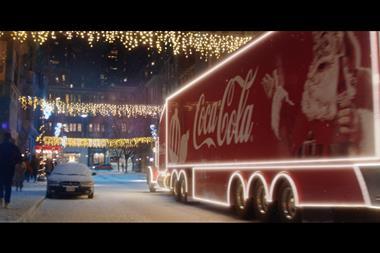
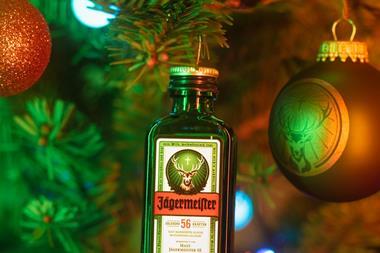
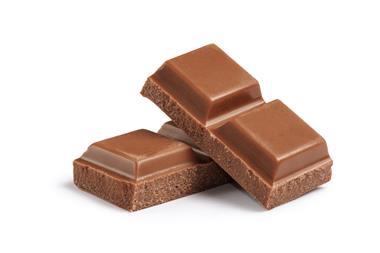
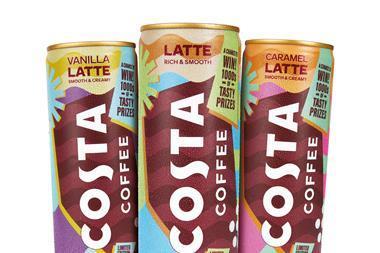

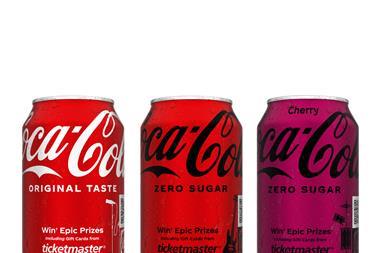
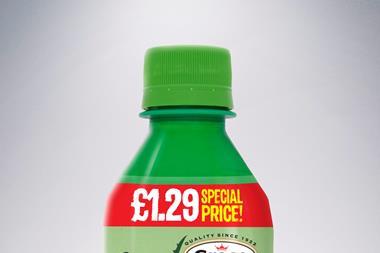
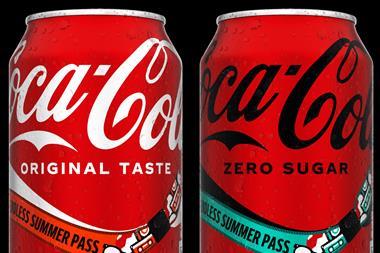

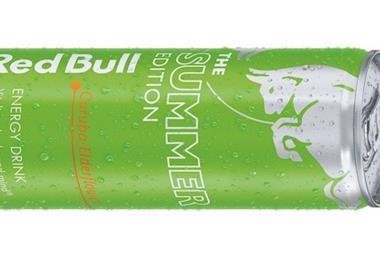
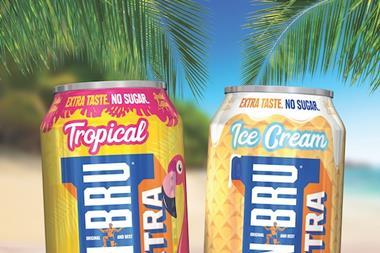
No comments yet